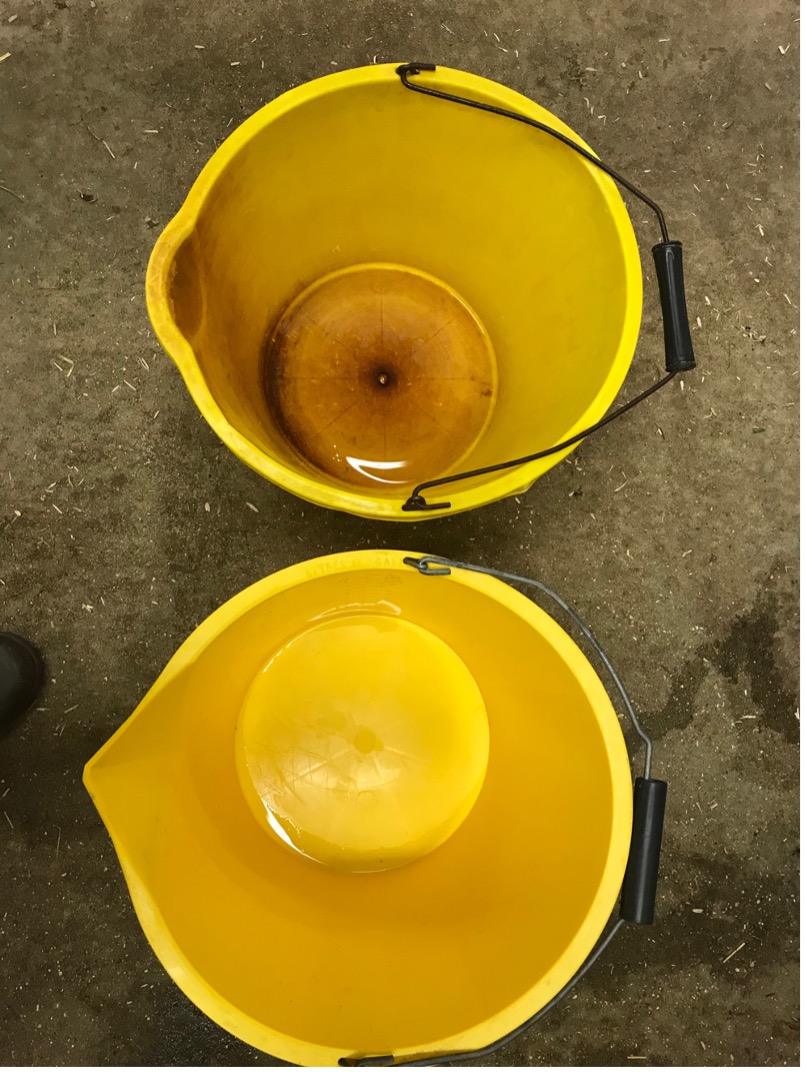With a newly developing immune system, a calf is highly vulnerable to infection and disease during the first few weeks of life. Poor hygiene practices – with both feeding equipment and within the environment – will increase a calf’s exposure to infectious pathogens and other undesirable materials. Indeed, many calf deaths or longer-term poor animal performance can often be attributed to poor hygiene practices on farm. This can result in not only the additional cost associated with immediate treatment, but also reduced feed efficiency – which leads to poor growth rates – and an adverse ‘knock-on’ effect for the lifetime performance of that animal.
Where do biofilms form?
Commonly-used feeding equipment such as teats, buckets and whisks can easily harbour invisible biofilms. These can provide the perfect substrate for disease-causing bacteria to thrive and lead to colostrum or milk becoming contaminated.
Biofilms develop on feeding equipment through inadequate or incorrect cleaning practices. Virtually no surface is immune to the build-up of biofilms; they can quickly develop on plastic, stainless steel and metal.
What is a biofilm?
A biofilm forms when milk residues (protein and fat) are left on a surface. Bacteria then bind to these residues and multiply quickly. The bacteria adhering to the surface also produce a substance to protect themselves from being moved. Consequently, the biofilm layer is able to preserve microbes that would not previously have survived in this environment, allowing a greater range of harmful bacteria to be present on feeding utensils to potentially contaminate any substance coming into contact with them.
Usually biofilms are invisible to the naked eye, although the surface of feeding equipment may feel rough or slimy. In extreme cases, a biofilm may show up as a yellow or white scum.”
The basics of milk chemistry compound the biofilm problem. Whey is a milk protein with heat sensitive bonds. If exposed to high temperatures – such as hot wash water – these bonds weaken, and the whey protein molecules become sticky. They then adhere to the inside of your feeding equipment unless it is washed regularly and correctly.
Who do you prevent biofilms forming?
Consequently, to ensure all feeding equipment is kept as clean as possible, practice a six-step routine to prevent biofilm development.
- RINSE with lukewarm water (32-38°C). Do not use hot water because this allows milk proteins and fats to stick more tightly to feeding equipment surfaces. Aim to reduce all dirt and milk residue.
- SOAK in hot water (54-57°C). Use hot water for soaking and add a chlorinated alkaline detergent. Soak for at least 20 minutes.
- SCRUB. Remove any remaining residues from feeding equipment using a brush to loosen any solids.
- WASH. Re-wash all of the feeding equipment in HOT water (at least 49°C) to remove any remaining residues.
- RINSE AGAIN. Rinse the inside and outside of feeding equipment again using an acid sanitiser. This lowers the surface pH and makes it very difficult for any remaining bacteria to thrive.
- DRY. Equipment should be left on drying racks to dry thoroughly. DO NOT stack buckets inside each other and certainly DO NOT sit feeding equipment upside down on a concrete floor because this will provide bacteria with the perfect environment to multiply.

Feeding equipment (such as buckets) used to feed milk to calves must be cleaned thoroughly using a six-step hygiene routine to ensure they remain clean and hygienic and, importantly, free from biofilms.
For more information, technical bulletins and best practise advice for calf-rearing, visit the resources section of our website.
Published on: 04 October 2022
View all articles